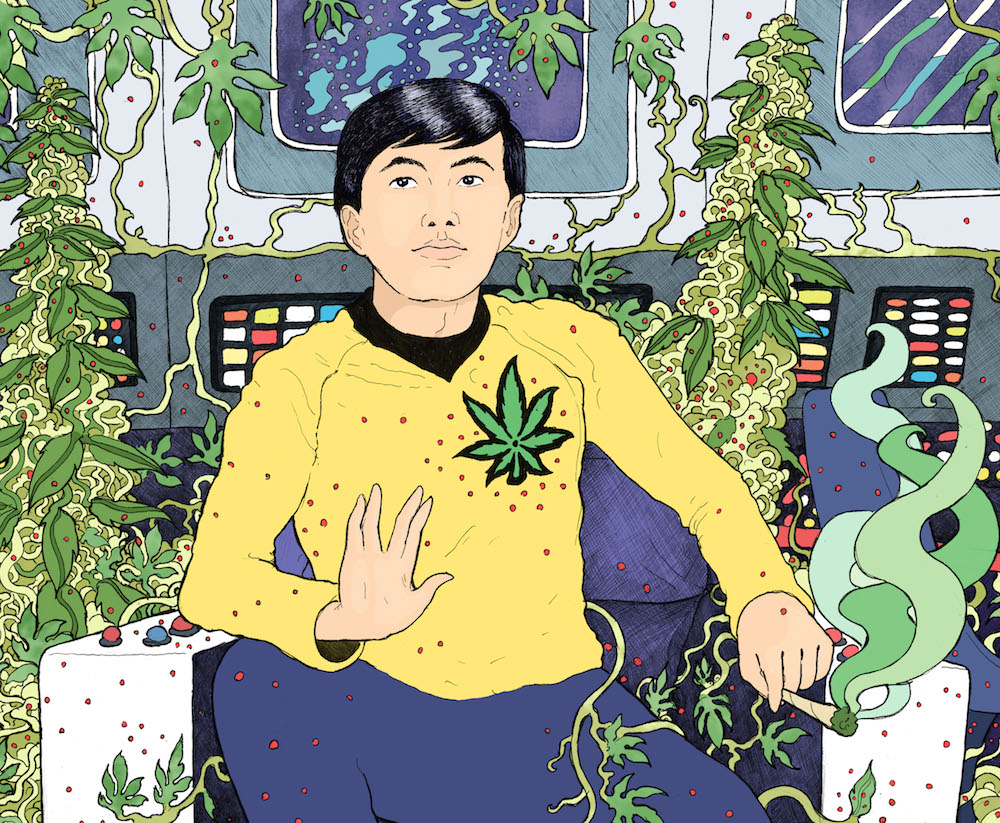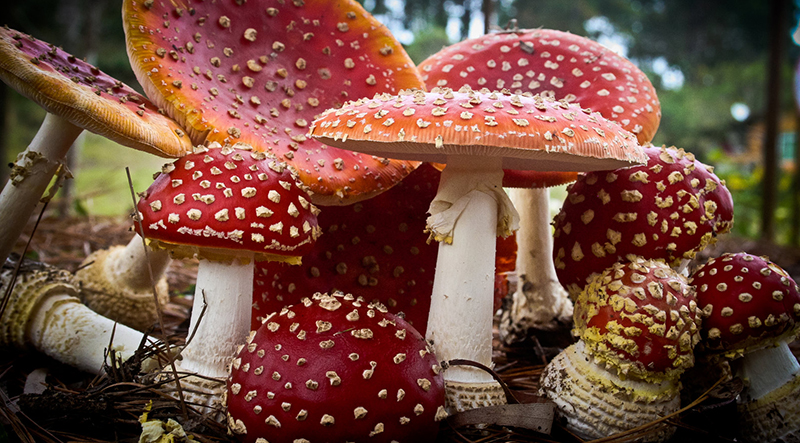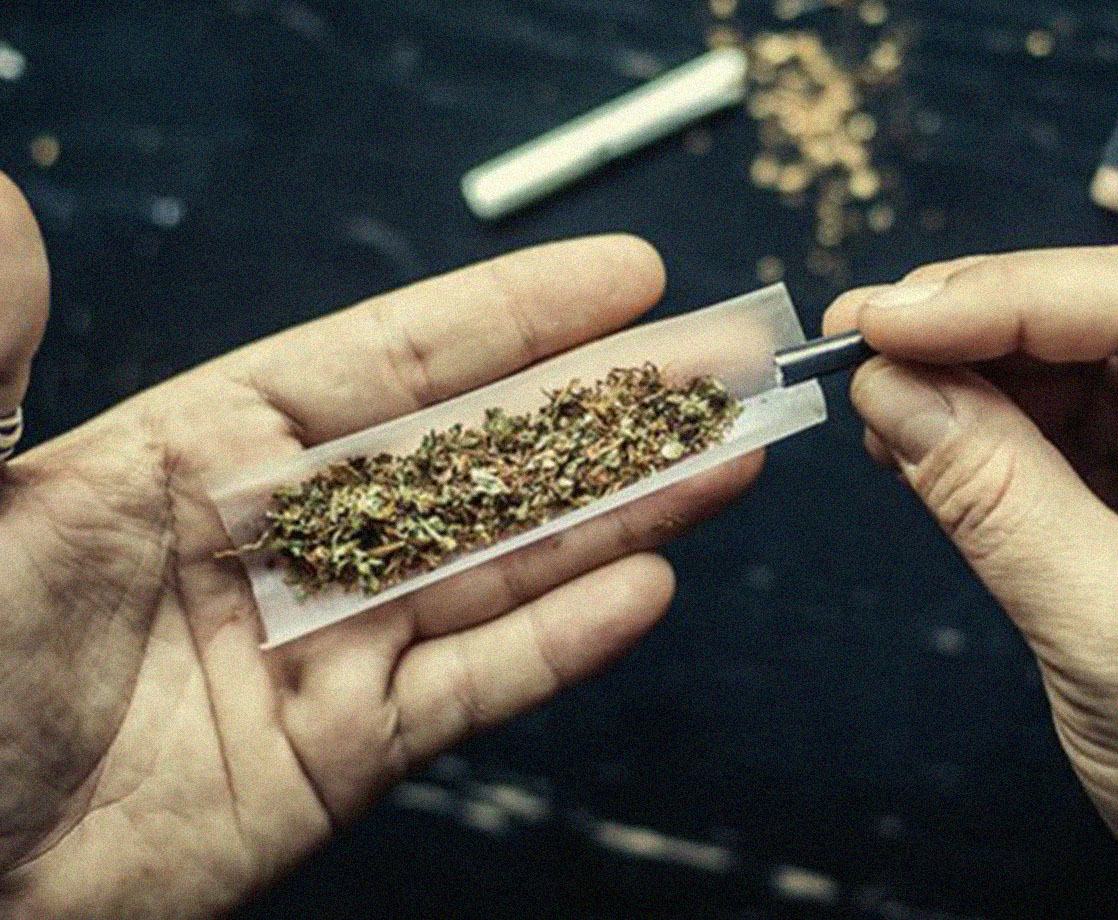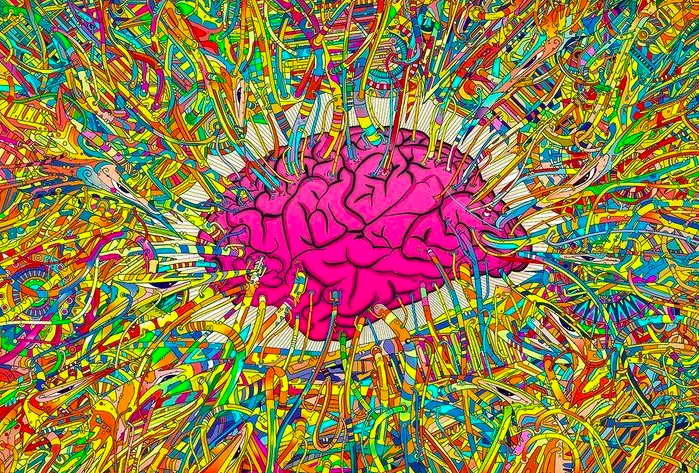Space – the final frontier, intones the iconic intro to Star Trek: The Original Series. In the mythologized American West, the frontier was a place of individual ideology and effort, where misfits could flee a society perceived as repressive to start their own lives, farms, and religions. But Star Trek's frontier – this one defined by unexplored boundary – is a place of cooperation and community, where humans and aliens of all types work together for the benefit of all. There's a unique spirit to Star Trek, a enduring feeling of heroism and goodness, which resonates even more so in the antihero-ridden dystopia of television's so-called "golden age."
"This Side of Paradise," episode 25 of Star Trek's first season, captures the series' rich emotional landscape*. In the episode, Captain Kirk and his crew discover a planet of colonists both healed and entranced by a local spore-spewing plant. As the crew members are drugged, one by one, and enticed to join the utopian agricultural colony, Kirk realizes that strong emotion can break the spores' hold. In this way he breaks the intoxicating spell and rescues the colonists – showing that in the world of Star Trek, cooperation and rescue go hand in hand with awareness and agency.
Between the original story by Jerry Sohl and the aired screenplay by D.C. Fontana, an anonymous rewrite of the script appeared. The author is since lost to the deep void of Star Trek mythos. Some say it was creator Gene Rodenberry himself, who was so unhappy with the results of the rewrite he scrubbed his name from the work. Some say, due to the Sulu lead, that actor George Takei wrote it, which he denies. Most likely, it simply a staffer attempting something great and coming up short.
The episode, known cheekily to diehards as "Paradise Lost," did not make it to air, but the script was table-read and a few scenes were shot. The rewrite drastically changed the plot to a more palatable story. MERRY JANE reached out to Mr. Takei, as well as some of the original cast and production crew, to learn the story of Star Trek's "Paradise Lost" for the first time. MERRY JANE has also obtained one of the few remaining copies of the original script, partially reproduced here for our readers' enjoyment.
GEORGE TAKEI (actor, Lt. Hikaru Sulu, Star Trek: The Original Series): That script… I remember finding it intoxicating in its richness. Gene [Rodenberry, creator and executive producer] had a very rigid image of what the episodes should be. I believe this episode, was a bit too… shall we say, morally complex, for the original iteration of the show.
HERMAN ZIMMERMAN (production designer, Star Trek: The Next Generation and other properties, 1987-2005): Or too expensive.
TAKEI: Plus, at that time, everything was Kirk and Spock, Kirk and Spock. I was happy to see background characters drawn to the forefront.
MERRY JANE: And, of course, this was a Sulu-focused episode.
RALPH SENESKY (director, "This Side of Paradise"): The story was about plants. Sulu was a hobbyist botanist. It fit!
[voiceover] Captain's Log, stardate 3417.3 – We had expected our mission to Omicron-3 to be an unhappy one. Upon receiving their distress signal, we assumed to find few or no survivors of the agricultural colony. Apparently, our assumptions were incorrect.
KIRK, SPOCK, SULU, and McCOY beam down to Omicron-3's surface. They appear in a densely vegetated field, rich with wildflowers and tall grass, speckled inconspicuously with a five-leafed plant.
SPOCK: The distress signal intercepted claimed an enemy settlement and invasion. And yet the tricorder shows no such activity on the planet.
KIRK: Interesting. Let's locate the source of the distress signal.
SENESKY: I remember reading the script and thinking, Wow, they're really going to let this happen on screen?
TAKEI: But it was the right energy for the time, 1968. It captured the countercultural vibe in a way that wasn't condescending or moralistic.
ZIMMERMAN: Which was doomed to go poorly at NBC.
[Senesky hums noncommittally.]
TAKEI: Here's how I remember it – please, Ralph, jump in if any of this is incorrect – but I believe the crew was beamed down to Omicron-3 and discovered that the colonists had been transformed into sentient plant-people.
ZIMMERMAN: Which required a lot of makeup.
TAKEI: Not that much.
ZIMMERMAN: The original design for the lead alien had twenty eyes. That's what you hone in on, in production design – do I have enough time and money to make this happen?
TAKEI: Right, she was like a housefly! I quite liked it. It was changed to twenty fingers, though.
SENESKY: So those were out of frame most of the time.
TAKEI: And she couldn't speak. She was supposed to communicate by blinking. In the end she was just a pretty girl with green makeup. But her name was Twenty, due to that original design. So when the team is searching the colony premises, they find most of the colonists missing or fully transformed into trees and grasses. Sulu, though, finds the colony communication center.
INT. OMICRON-3 COMMS STATION. TWENTY, A BEAUTIFUL WOMAN WITH GREEN SKIN AND MULTIPLE EYES LIKE A HOUSEFLY'S, STANDS AT THE HELM.
SULU: I am Lt. Hikaru Sulu of the Starship Enterprise. We're answering your distress signal. What happened here?
TWENTY SHAKES HER HEAD. SHE CANNOT SPEAK, BUT RUNS TO SULU AND GRABS HIS HANDS DESPERATELY.
SULU: Come with me. We'll beam up – the medical tech on the Enterprise is most advanced—
TWENTY SHAKES HER HEAD AGAIN AND TAKES HIS HANDS. SHE COMMUNICATES TELEPATHICALLY.
TWENTY (VOICEOVER): On this planet, there is one plant that can save me. You must find it before it's too late.
SENESKY: I mean, it was dark. We didn't even get to even film a lot of the darker stuff. The script had these descriptions of dirt mounds covered in moss with human arms reaching out from them, mid-transformation. Really creepy.
ZIMMERMAN: Definitely more of a fit for Deep Space Nine.
SENESKY: Then the crew discovers that the transformation is part of an alien experiment – an absent society's attempt to enhance their agricultural abilities by making it sentient and self-sustaining. But it was a failure left to die. The spores, though, were still active, and they infect Kirk and Spock.
TAKEI: I believe there was a sequence of Captain Kirk eating dirt.
SENESKY: So Kirk, Spock, and Twenty all beam up to the sick bay to deal with the infection. Sulu, since he was as yet uninfected and also a botanist, was left to find the mysterious healing plant.
TAKEI: This was the unnerving part, for me, as an actor.
INT. OMICRON-3 BARRACKS. THE FLOOR IS LITTERED WITH UNMOVING BODIES OF COLONISTS AND UNKNOWN ALIENS. THE GREENERY GROWING IN THE BODIES OF THE COLONISTS IS SPREADING TO SUBSUME THE ALIENS. AT THE END OF THE ROOM A SINGLE FIVE-LEAFED PLANT GROWS ALONE UNDER A RAY OF SUNSHINE.
SULU: Come in, captain. I've discovered the alien's plant. It appears as if the colonists… and the vegetation… were defending it from the invaders.
INT. SICK BAY. DR. McCOY HOLDS KIRK'S COMMUNICATOR. KIRK AND SPOCK ARE BOTH THRASHING IN BEDS, THEIR FLESH TURNING GREEN.
McCOY: Get it and come back then, Lieutenant! The captain and Mr. Spock are — transforming!
ZIMMERMAN: Yeah, those kinds of effects – definitely out of the range of TOS.
SENESKY: I don't think it was that. There was too much death.
TAKEI: There was something too ominous about it. The death was too close to the surface – too real. It didn't appeal to audiences to suggest that, one, the planet itself was taking over the colonists, and two, that everyone would die in the battle for this one mystical plant.
MERRY JANE: It seems symbolic.
TAKEI: I thought it was. For me, it represented the violence people inflict upon each other in competition for natural resources. But at the same time – it suggested that one day, the planet could fight back.
SENESKY: Which was being considered in the 1960s, but not by mainstream production companies like NBC.
INT. BARRACKS. SULU REMOVES THE PLANT FROM ITS POT. UPON DOING SO, THE PLANT BODIES ON THE GROUND BEGIN TO STIR. THE PLANTS ATTACK HIM, BUT HE ESCAPES. OUTSIDE HE IS BEAMED UP.
INT. MED BAY.
McCOY: Tell me you got it!
SULU PRESENTS THE PLANT: This is the one. This is for Twenty.
CUT TO TWENTY, BARELY BREATHING IN A SICK BAY BED. SULU TAKES HER HAND.
McCOY: What do we do? How do we use it? I can reverse engineer it into a serum, but that will take time – if there's a quicker way to access its healing properties, we need to know!
TWENTY (weakly): Fire…
TAKEI: So they light the plant and use it like sage stick, waving it over the bodies of the sick.
MERRY JANE: A little hippie-ish, for sure.
SENESKY: Definitely didn't fit the tone of the series. The serum would've been better.
TAKEI: But that was the point, I felt – that it was a more shamanistic solution. That it's not always the science we understand that saves us.
ZIMMERMAN: Which, of course, doesn't fit the tone.
TAKEI: Hm.
AS THE SMOKE CLEARS, KIRK AND SPOCK ARE BOTH HEALED. IN HER BED, TWENTY LOOKS EVEN WEAKER.
McCOY: It's too late. The disease is taking over.
TWENTY: Thank…you…
TWENTY DIES. HER BODY SHIMMERS AND DISAPPEARS, AND IN ITS PLACE IS A SMALL SEEDLING OF THE FIVE-LEAFED PLANT.
SULU: She's left us this as a gift. So the healing plant doesn't disappear from the universe.
SULU TAKES THE PLANT GINGERLY IN HIS HANDS.
SULU: I'll take it to the botany chamber and cultivate it – for medical purposes, for all of us, and for Twenty.
TAKEI: And that's how it ended. Plus the standard captain's-log voiceover.
SENESKY: So, as you can imagine, after the table read that became a bit of a standing joke on set— "I'm looking for Twenty—"
ZIMMERMAN: I heard about this.
TAKEI [laughing]: Yes, I did take that a bit to the extreme. It became the on-set slang for marijuana. "A cure for Twenty."
SENESKY: Which was probably part of the reason the episode was started and then nixed – if it had taken on such a life of its own on set, Rodenberry didn't want it to expand to the larger cultural scene.
TAKEI: Right. It would've gone viral, to use a modern parlance. And he didn't want Star Trek to be associated with drug use.
MERRY JANE: Wait, are you talking about the slang? Four-twenty? That slang?
TAKEI: Well, yes.
MERRY JANE: You started that?
TAKEI [laughing]: There are a lot of roads in this world that eventually lead back to Takei.
As our world charges forward, as humans live longer, cure diseases, and send cars to the moon, we will be continuously unravelling Star Trek's legacy – in everything from our worldview to our slang. Before we parted, I asked Mr. Takei what he thought of having a personal, unknown Star Trek reference take on such a life of its own.
TAKEI: It doesn't matter – it lives on with or without my approval. But try to find the unaired episodes of season 3 and see if you can find the one where Chekhov says "blaze it."
He offered no further details.
*This 'fauxral history' is a work of parody. The interviewees are real people who were not actually interviewed. The 'lost screenplay' exists only in our dreams. Happy 4/20 and happy birthday George Takei!











